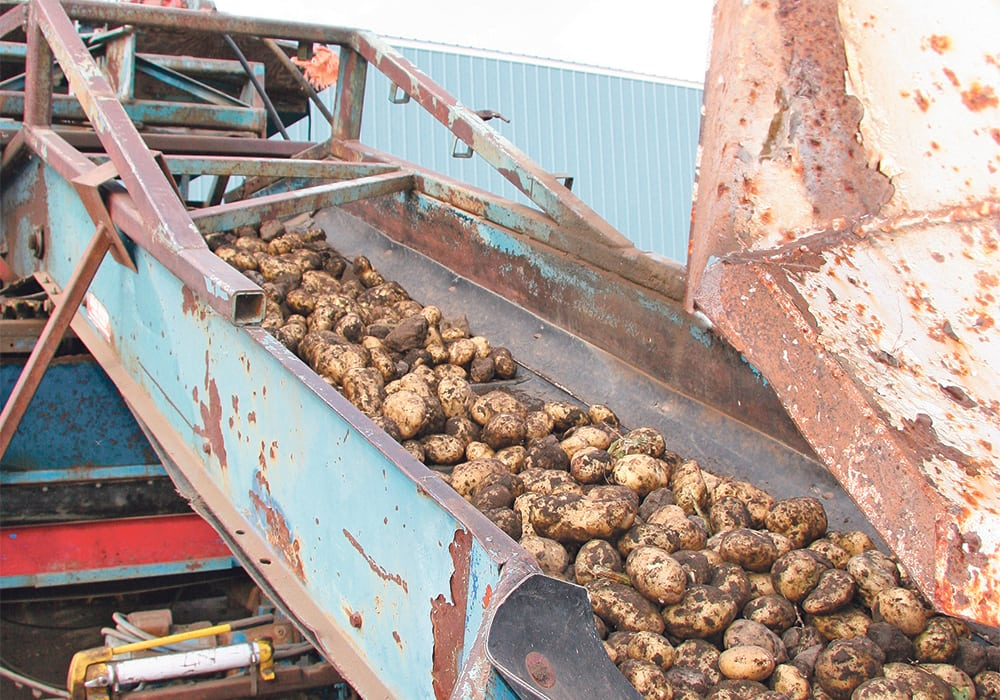Researchers at the University of California, Riverside, are focusing their attention on a recently identified, rapidly mutating bacteria called Liberibacter capsica, wary that it may become as harmful to crops as some of its relatives.
L. capsica is related to a family of bacteria called Liberibacter, of which there are nine known species. One species infects potatoes and three are associated with the deadly citrus-greening disease, also known as huanglongbing.
Allison Hansen discovered Liberibacter bacteria in the mid-2000s when she was a doctoral student in entomology at UCR. She discovered and named a bacterial pathogen responsible for psyllid yellows, a disease that kills tomato and potato plants and was found to spread from plant to plant by the sap-sucking insect, psyllid. Psyllid yellows resulted in yield losses of tomatoes of up to 85 percent and 50 percent in western North America during 2001 and 2004, respectively.
Read Also

Genesis Fertilizers seeks government funding
Genesis Fertilizers is actively seeking funding from government and a strategic partner. The company dispelled a rumour that DL E&C has abandoned the project.
But how the tomato psyllid caused such destruction had remained a mystery. Hansen’s research uncovered a symbiotic relationship between the sap-sucking insect and the Liberibacter bacteria.
“It started back in grad school when I discovered Candidatus Liberibacter psyllaurous accidentally when screening for endosymbionts in the tomato psyllid that historically had caused disease on tomato and potato without people understanding why. After identifying a new bacterial Liberibacter species in that psyllid insect pest and conducting transmission trials, it became much clearer that Liberibacter psyllaurous was associated with this historical unexplained disease.”
It became an ambition of hers to find more symbiotic insect/bacteria relationships and, potentially, new Liberibacter associations to help inform the research community of pathogens that may threaten agriculture.
“Luckily,” she said, “we have the technology now to do more things high throughput than when I was a grad student, especially in regard to screening for bacterial associates of insects.”
Her screening of psyllid insect samples for the current study included 44 species of 35 genera of five families collected from 11 international locations. The screenings led to the discovery of Liberibacter capsica.
It was found by chance in a pair of flying psyllid insects on a pepper plant in Brazil.
“Since I did not have any other samples of this psyllid that harboured L. capsica or the plants it fed on in Brazil, I used a comparative evolutionary genomics approach to understand more about its biology and evolution in order to understand its potential as a pathogen.”
The geonomics approach resulted in Hansen’s team identifying 21 genes in the bacteria associated with infection. One subset of mutations is found on genes affecting the tiny bacterial “hairs” that allow bacteria to move onto host insects and take up DNA. The insects then transmit the bacteria to plants.
The psyllid insect species that was found to be carrying the new Liberibacter species is a specialist on peppers but researchers remain wary of its potential to spread.
“We need to do more disease detection in this insect’s populations and potential host plants to further understand the threats to peppers and other crop plants. (We need to know) if another psyllid pest is in this psyllid’s host-plant range and feeds on peppers and on other crops. We are informing scientists in Brazil and other places to screen plants for it. It should be on everyone’s radar for outbreak potential given the propensity of Liberibacter being serious plant pathogens on domesticated crops.”
In recent years, diligent research to find controls for diseases caused by the bacteria family is yielding results. In 2020, UCR geneticist Hailing Jin and her team discovered the first substance capable of controlling citrus-greening disease. The molecule is an antimicrobial peptide found in greening-tolerant Australian finger limes. The peptide is safe even when used in high heat, compared to antibiotic sprays that are temperature-sensitive, easy to manufacture, and safe for human consumption.
Jin found the peptide by isolating the genes that contribute to the lime’s innate immunity. One of those genes produced the peptide, which she tested over a two-year period for its effectiveness. That research is the subject of a licensing agreement between the university’s Office of Technology Partnerships and Boston-based Invaio Sciences Inc. to develop a vaccine or foliage spray for citrus tree protection.
Hansen’s research is expected to focus on international screening to identify how widespread Liberibacter bacteria are.
“There needs to be more screening in order to be proactive and prevent outbreaks,” she said. “I’m looking forward to helping and working with more international collaborators. I hope we can get funding together to determine how much of a threat this is to our agriculture.”
The research was published in the journal Microbiology Spectrum.















